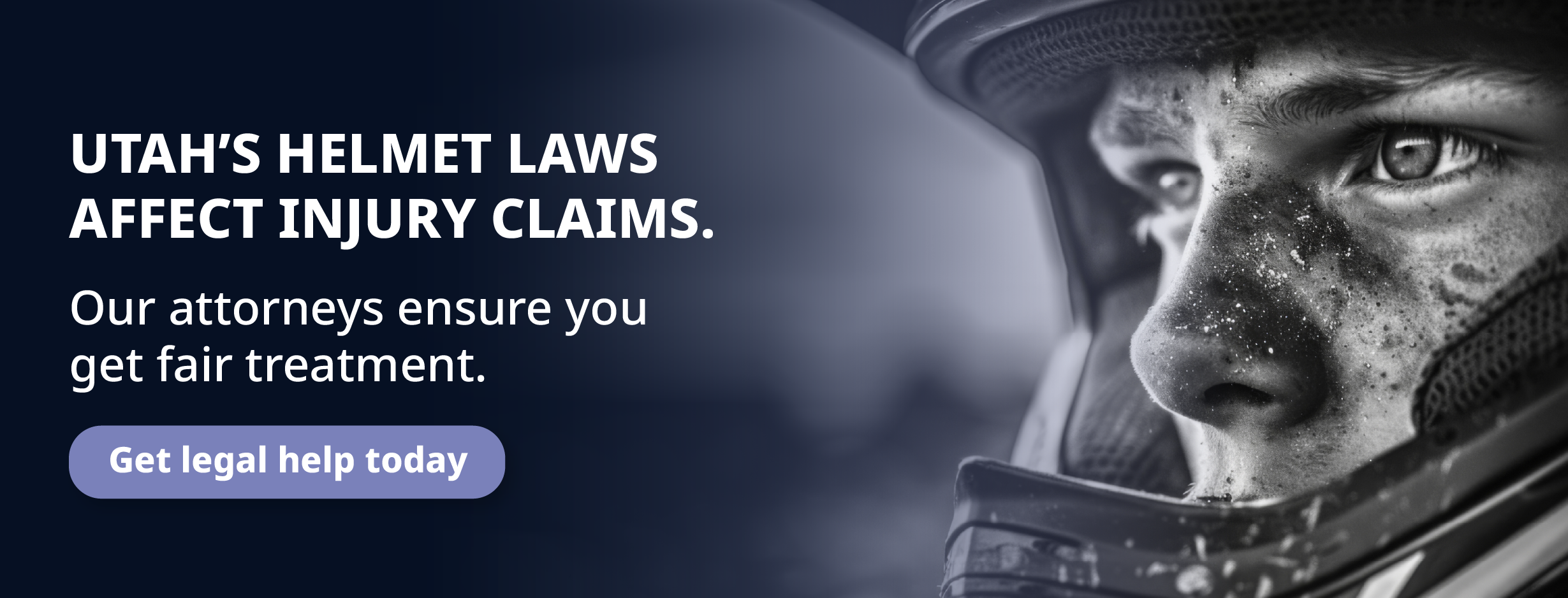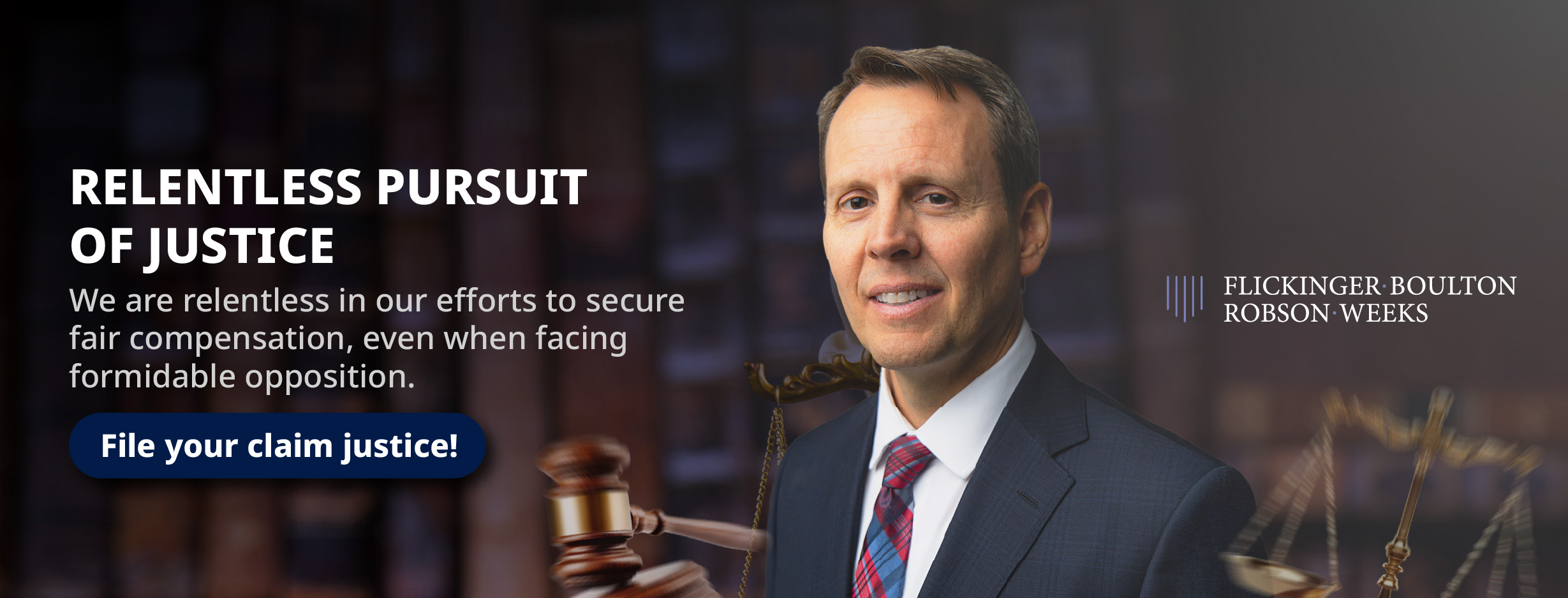¡Hablamos Español!
Riding a motorcycle offers freedom and excitement, but it also comes with risks, especially when it comes to head injuries. In Utah, helmet laws and safety regulations play a crucial role in protecting riders from severe or fatal injuries. While state law requires helmets for certain riders, choosing to wear one can make a significant difference in the event of an accident.
At Flickinger Boulton Robson Weeks, our Utah motorcycle accident lawyers understand how helmet use, and safety regulations can impact injury claims and legal outcomes.
Whether you need clarification on Utah’s helmet laws or legal guidance after a motorcycle accident, our team is here to help. Contact us today to learn how we can protect your rights and fight for the compensation you deserve.
Understanding Utah’s helmet laws is crucial for motorcyclists to ensure safety and compliance with state regulations. These laws are designed to protect riders and passengers, particularly younger individuals, from severe injuries in the event of an accident.

For helmets to be compliant with Utah’s regulations, they must meet the standards set forth by the U.S. Department of Transportation. Key requirements include:
Failure to adhere to Utah’s helmet laws can result in legal consequences:
In Utah, the decision to wear or not wear a helmet can influence personal injury claims:
Regardless of age or legal requirements, all motorcyclists are encouraged to wear helmets to enhance safety. Additional protective gear includes:
By understanding and adhering to Utah’s helmet laws and safety recommendations, motorcyclists can significantly reduce the risk of injury and ensure a safer riding experience.
Helmet use plays a crucial role in motorcycle accident injury claims, especially when it comes to determining liability, compensation, and contributory negligence.
While Utah law does not require riders over 21 to wear a helmet, whether or not a rider was wearing one at the time of an accident can still impact an insurance claim or lawsuit. Understanding how helmet use affects injury claims can help riders protect their legal rights.
In Utah, motorcycle accident victims can seek compensation for medical expenses, lost wages, pain and suffering, and other damages. However, whether or not a rider was wearing a helmet at the time of the crash may influence how much they can recover.
Utah law mandates helmet use for riders under 21. If a minor is involved in an accident and is not wearing a helmet, insurance companies or the defense may argue contributory negligence, potentially reducing the compensation they can receive, especially if they suffered head or brain injuries.
Since helmet use is optional for adult riders, choosing not to wear one does not automatically reduce compensation for injuries. Utah law does not allow the lack of helmet use to be considered negligence when determining fault in a motorcycle accident case.

Utah follows a modified comparative fault system, meaning that a victim can recover damages as long as they are less than 50% at fault for the accident. While failure to wear a helmet cannot legally be used against adult riders to establish fault, it may still be brought up in settlement negotiations or by insurance adjusters to limit the amount of compensation offered.
A Utah motorcycle accident lawyer can protect a rider’s rights by:
Injured motorcyclists have the right to pursue full and fair compensation after an accident, regardless of whether a helmet was worn.
Riding a motorcycle offers freedom and excitement but comes with significant risks. Unlike cars, motorcycles do not provide structural protection, making safety gear essential for reducing the risk of severe injuries in the event of an accident.
Wearing the right protective equipment can make the difference between minor injuries and life-threatening consequences. Below are key safety gear recommendations for riders to enhance their protection on the road.
A DOT-approved helmet is the most critical piece of protective equipment for motorcyclists. Studies show that helmets reduce the risk of fatal head injuries by 37% and brain injuries by nearly 69%.
Always look for a DOT, ECE, or Snell certification to ensure your helmet meets safety standards.
Debris, insects, and wind can impair a rider’s vision, increasing the risk of accidents. While a full-face helmet includes built-in eye protection, riders who choose open-face or modular helmets should wear:
A high-quality motorcycle jacket protects against road rash, impact injuries, and harsh weather conditions. Look for:
Motorcycle gloves protect the hands from abrasions, cold temperatures, and vibrations. Key features to look for include:
Denim jeans offer minimal protection, while dedicated motorcycle pants significantly reduce injury risk. Recommended options include:
Motorcycle accidents often occur because drivers fail to see riders. Increasing visibility with bright-colored gear, reflective strips, and LED-enhanced vests can reduce the likelihood of collisions, especially at night.
Riders should also consider:
Wearing the proper safety gear can drastically reduce the severity of injuries in a motorcycle accident. Investing in high-quality protective equipment ensures a safer riding experience, whether commuting daily or taking long-distance trips.
Failing to comply with motorcycle safety laws, such as helmet regulations, licensing requirements, or insurance mandates, can significantly impact a rider’s ability to recover compensation after an accident.
While Utah follows a modified comparative fault system, non-compliance with legal requirements may weaken a claim and reduce the amount a victim can receive. Below are the ways non-compliance can affect compensation.
Insurance companies often look for reasons to deny or limit claims, and failing to comply with Utah’s motorcycle laws can give them leverage to do so.
If a rider does not have a valid motorcycle endorsement on their driver’s license, the insurance company may argue that they were not legally qualified to operate the motorcycle, potentially reducing or voiding coverage.
Utah requires motorcyclists to carry liability insurance. If a rider is uninsured at the time of the crash, they may face out-of-pocket expenses and legal penalties, even if another party was at fault.
When an injured motorcyclist fails to follow safety laws, the at-fault party’s insurance or defense team may argue that the rider contributed to their own injuries.
Utah follows a 50% modified comparative fault rule, meaning a rider can recover damages only if they are less than 50% at fault for the accident. However, if they are partially responsible, their compensation will be reduced proportionally.
For example:
Non-compliance may also make it harder to prove negligence on the other driver’s part. Insurance companies may argue that the rider’s failure to follow the law makes it unclear who is truly responsible for the accident.
While non-compliance does not automatically prevent an injured motorcyclist from recovering damages, it can create significant legal challenges. Riders should always follow Utah’s motorcycle laws to protect their safety and legal rights in the event of an accident.